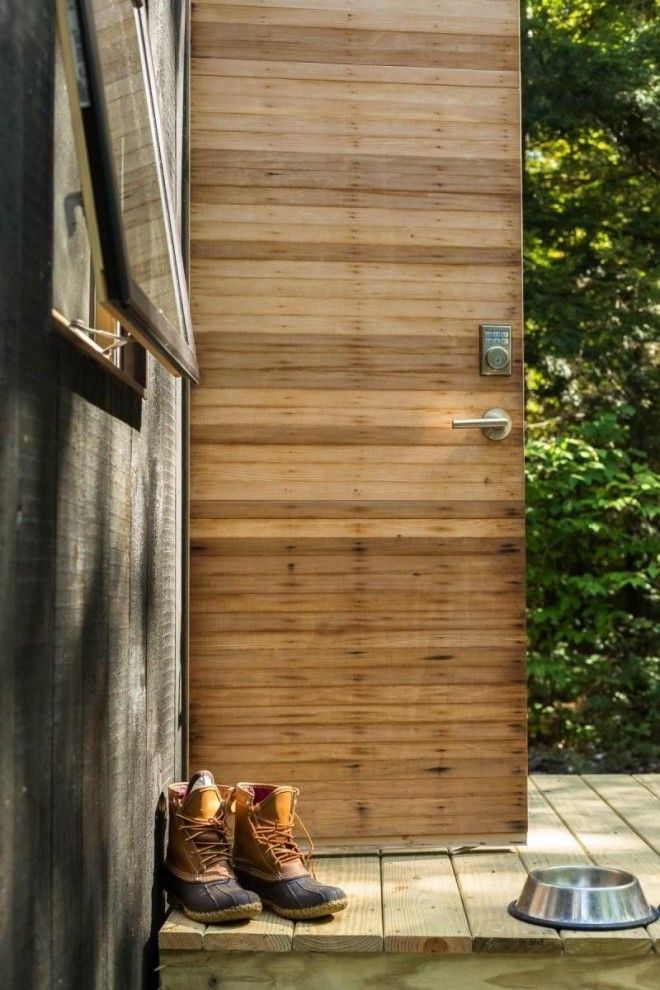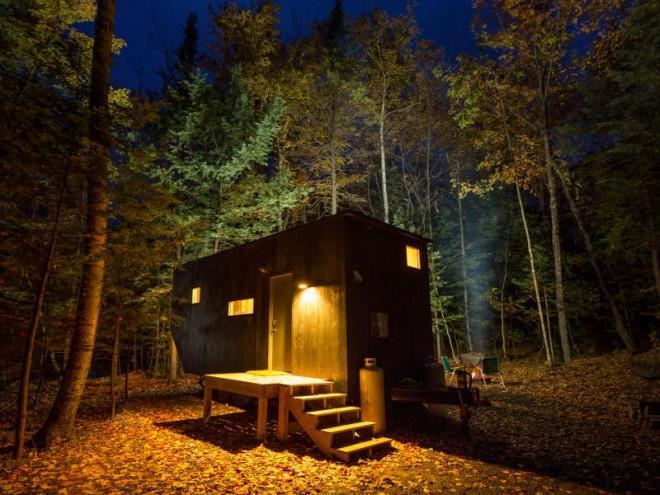Getaway, a hospitality startup launched in the Harvard Innovation Lab, shakes up that routine by offering tiny houses for rent. Relaxing in the forest reins in the temptation to take day trips or shop, leaving guests to unwind. It's like camping, but with the creature comforts of home.
The company maintains three 160-square-foot tiny houses in the Massachusetts woods, which guests can book for $99 a night. The location of the homes is top secret, but all are within a two-hour drive of Boston.
Tech Insider spoke with Jon Staff, CEO of Getaway and a Harvard Business School student, to see why tiny houses might be the future of tourism.
Getaway, founded by two Harvard graduate students, aims to provide a convenient and affordable way to disconnect from the daily grind.
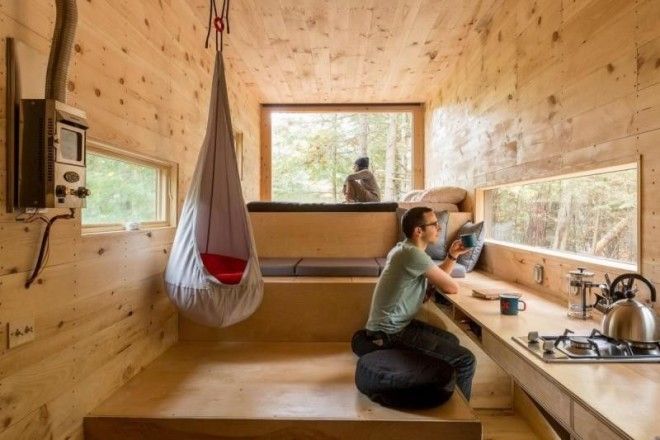
"We really want you to do nothing at all," says Staff.
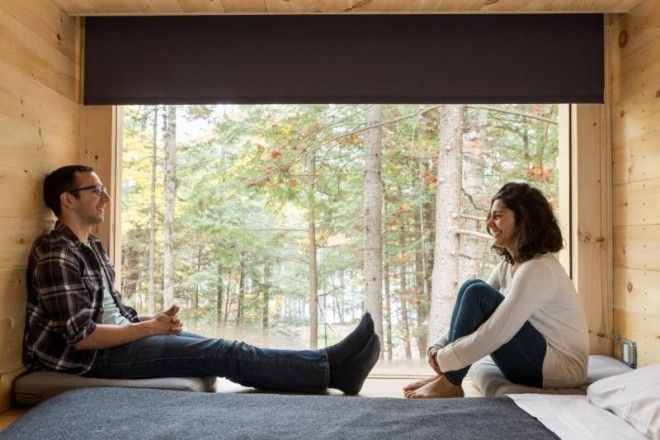
This is the Ovida, the first tiny home designed and built by Getaway.
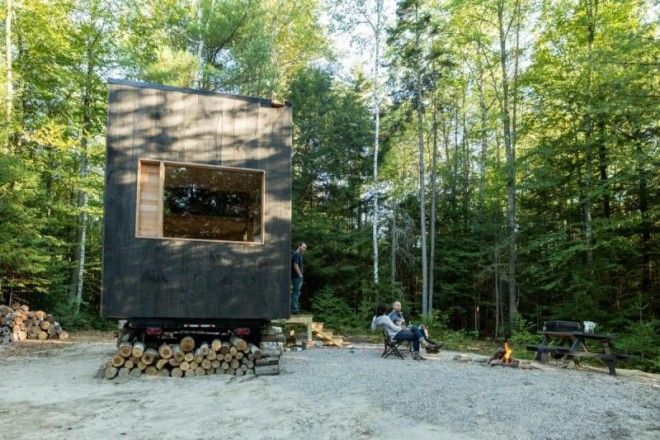
Located at an undisclosed lot two hours outside Boston, it offers total privacy.
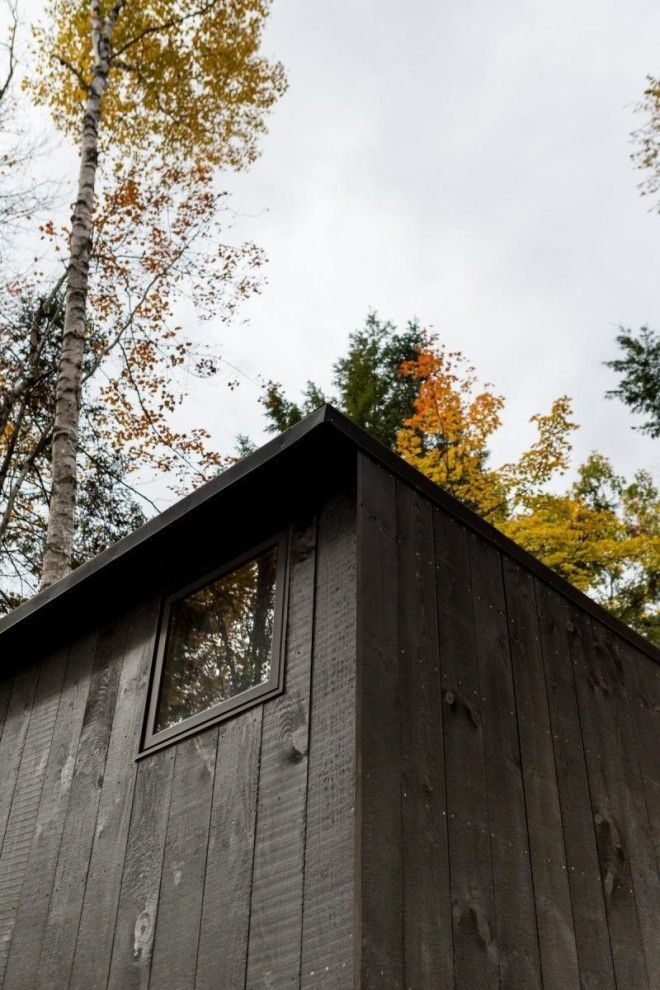
"It's far enough [from the greater Boston area] that you can feel disconnected," Staff says, "but near enough that you don't spend all your time getting there."
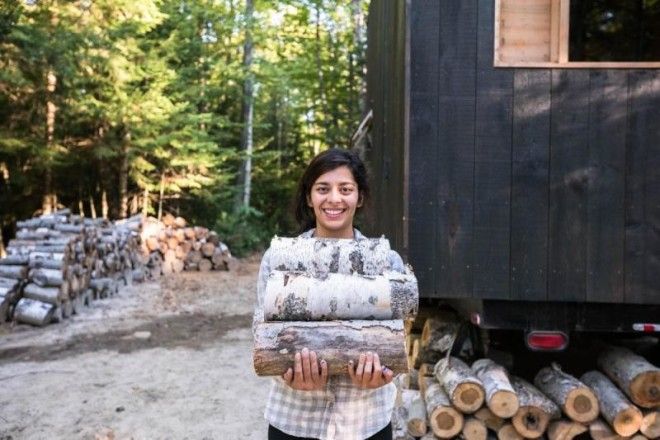
Tiny houses aren't usually occupied by more than one or two people, but the Ovida has two lofts and a sleeping nook, allowing for a larger group.
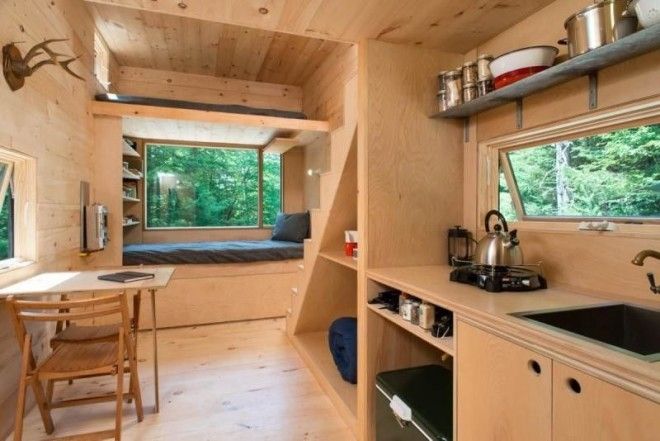
It comes equipped with snacks, classic reads, and board games.
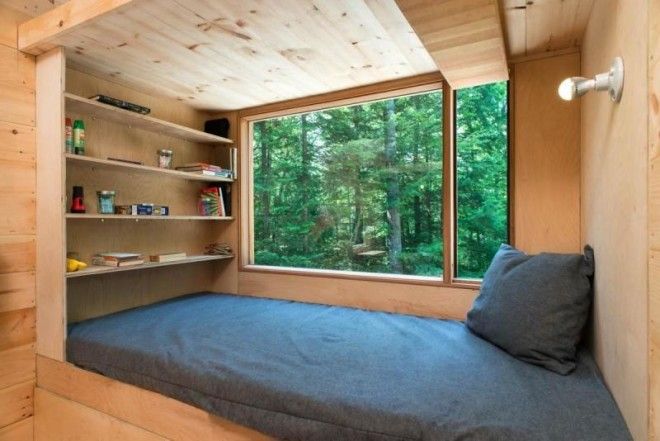
Propane heats the water and keeps the unit toasty during cold New England winters.
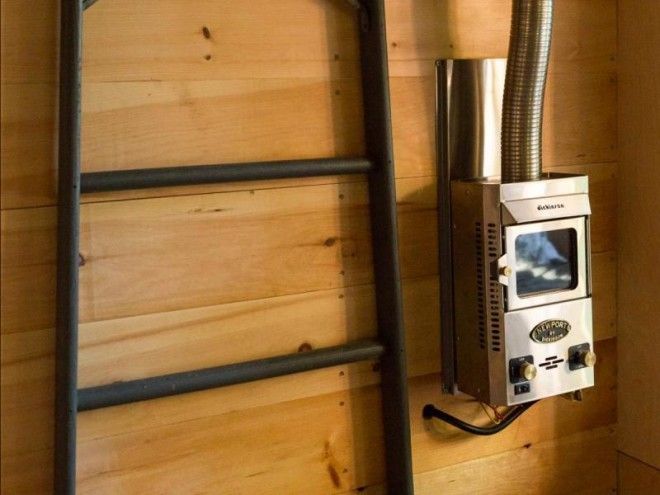
Solar panels provide electricity and power the electric toilet.
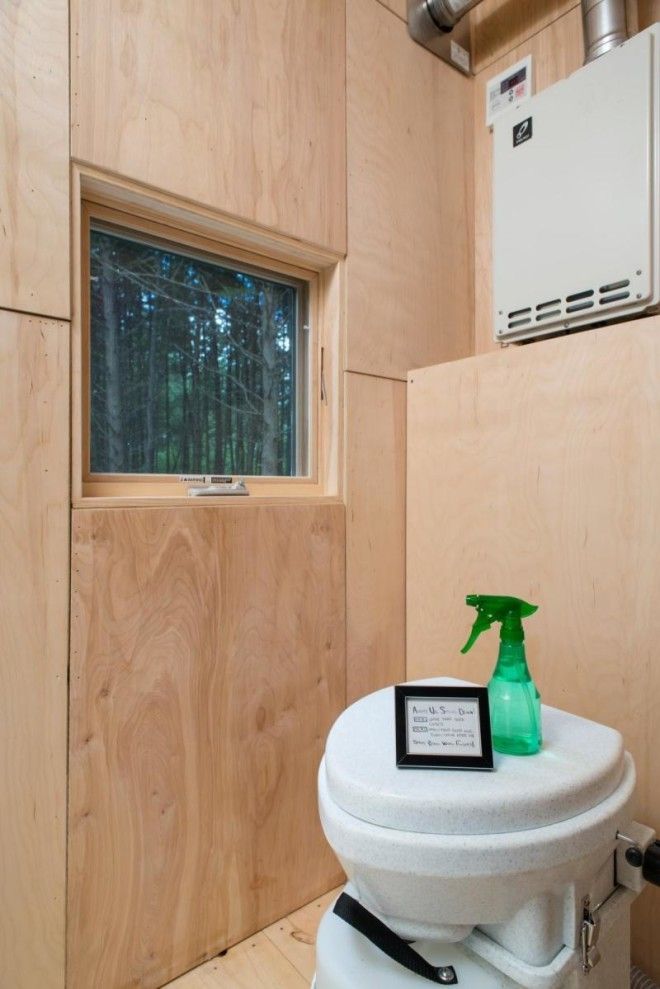
The Ovida looks a little quirkier than a typical tiny house. Staff explains that it's designed specifically for short-term guests, as opposed to full-time residents.
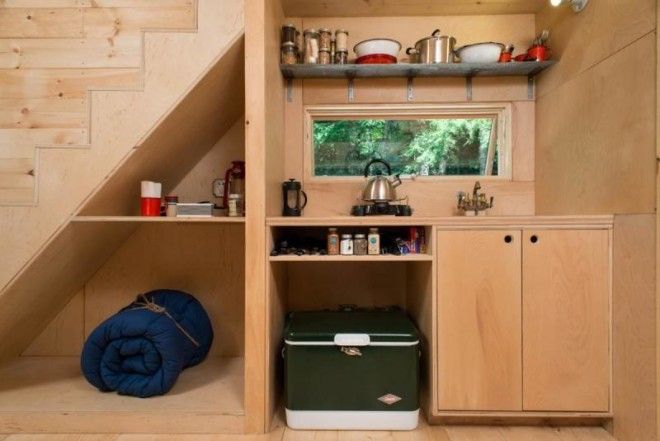
"We can worry less about storing four seasons of your wardrobe and a hundred kitchen gadgets," Staff says. "That frees us up to do these more whimsical things."

For example, the Lorraine — Getaway's second tiny house — lacks a lofted bed, which
Advertising
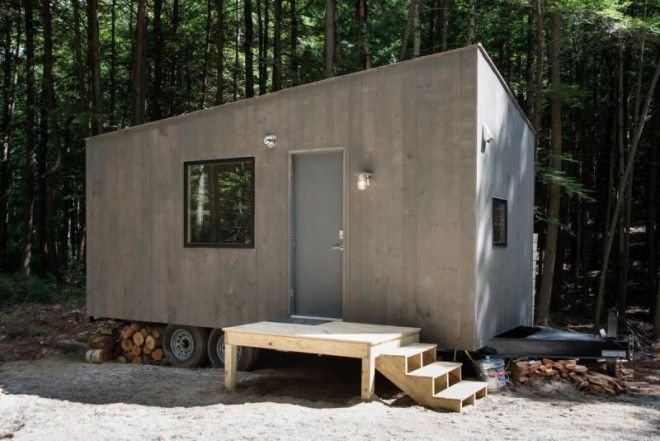
Designers crafted the Lorraine as a writer's retreat, with a continuous work surface that stretches from the kitchen to the bedroom.
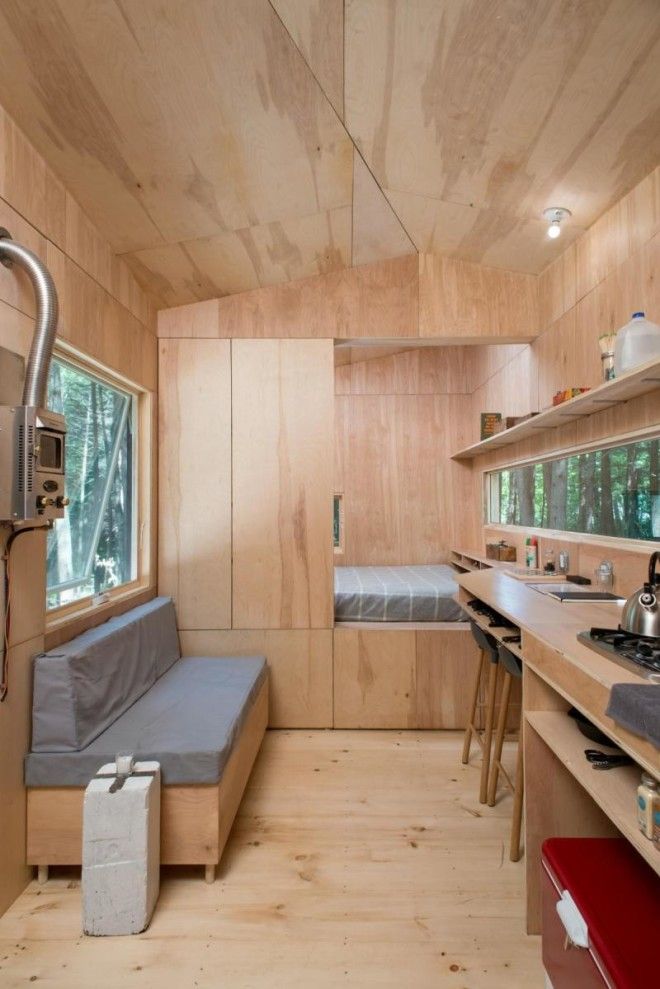
A ribbon window runs the length of the house, letting in breathtaking views of nature.
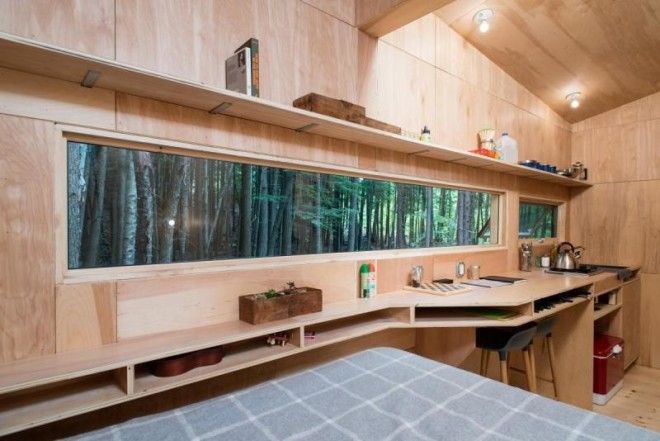
A grill and campfire lure guests to the outdoors.
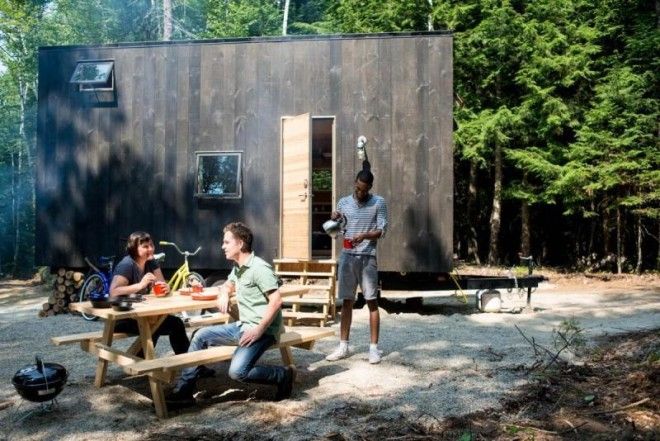
Clara, the newest house, has a treehouse-inspired interior.
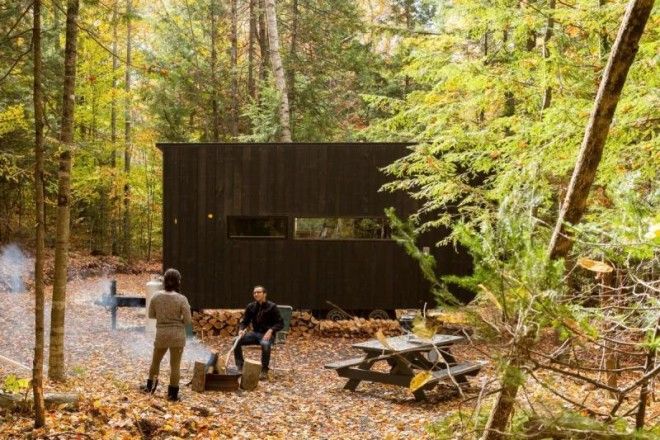
In true "Swiss Family Robinson" fashion, the Clara has three distinct levels.
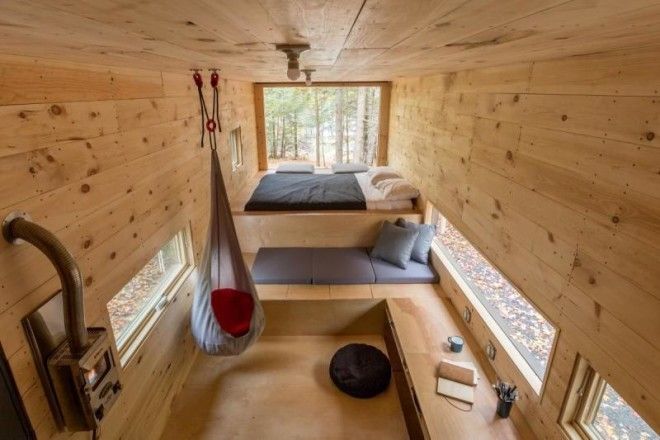
"These levels offer unprogrammed places to sit, eat, sleep, curl up, lean, do work, and hang," the designers write in a statement. There is no conventional furniture.
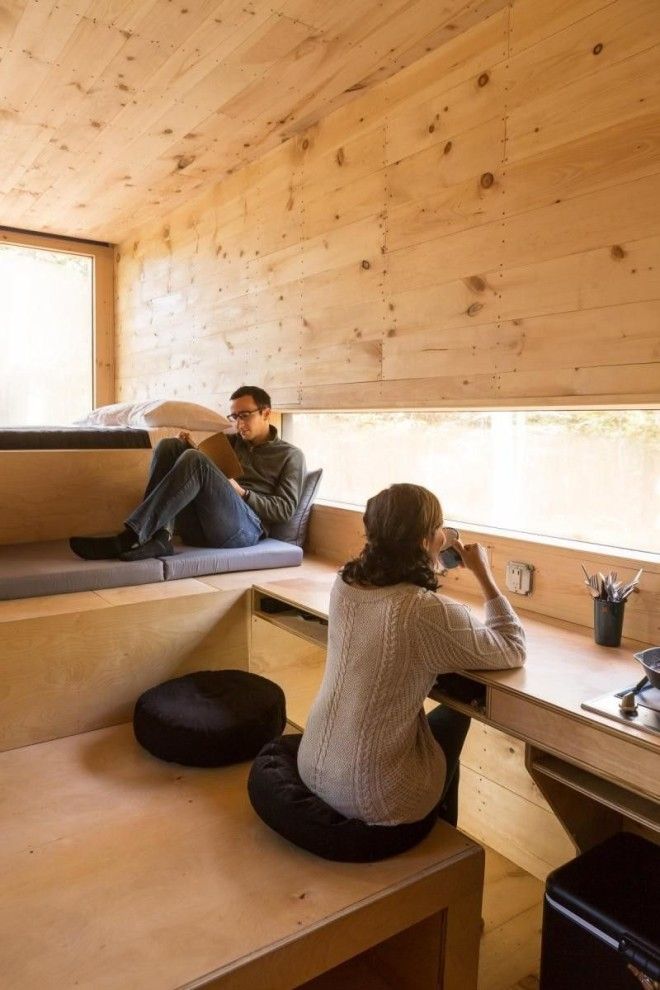
The Clara fits four comfortably, with three sleeping surfaces, including a loft.
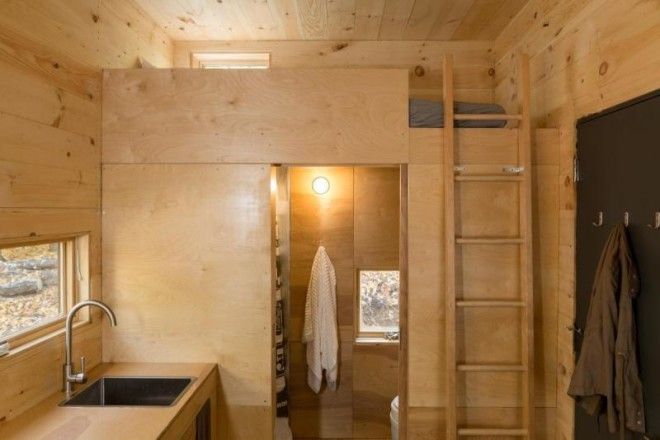
Expansive windows foster ties between the land and life inside the house.
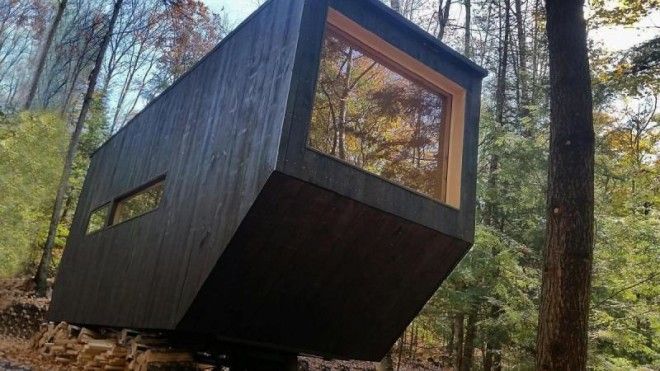
Food and provisions are stocked before the guests' arrival.
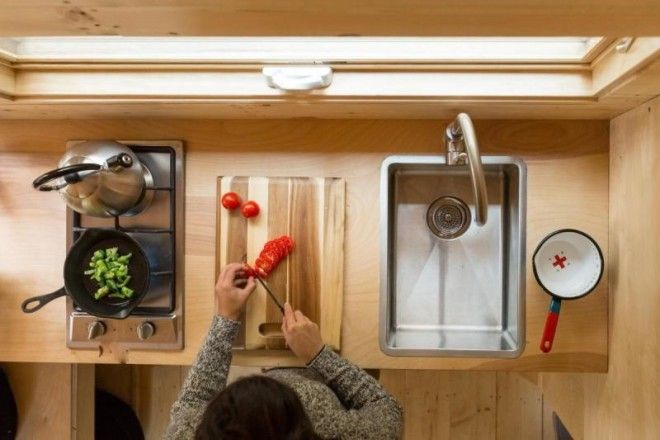
Music hums through the home's portable speakers.
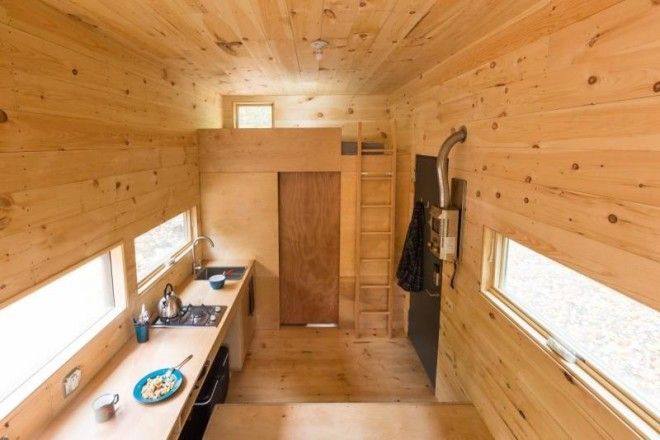
Guests who are cold can turn up the propane heater to stay warm.
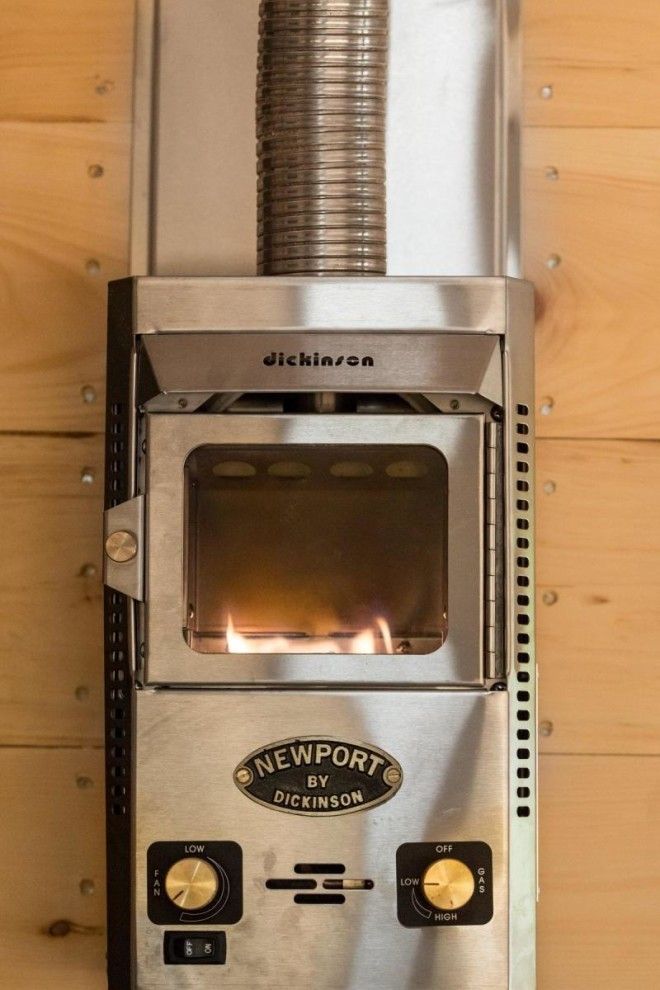
Though Clara and its counterparts are beautifully designed, Staff hopes guests spend as little time inside as possible.
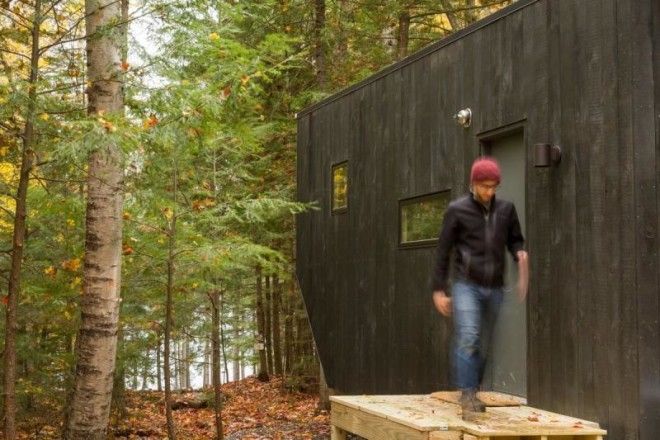
He once lived in an Airstream trailer, and says its compact size forced him out into the world.
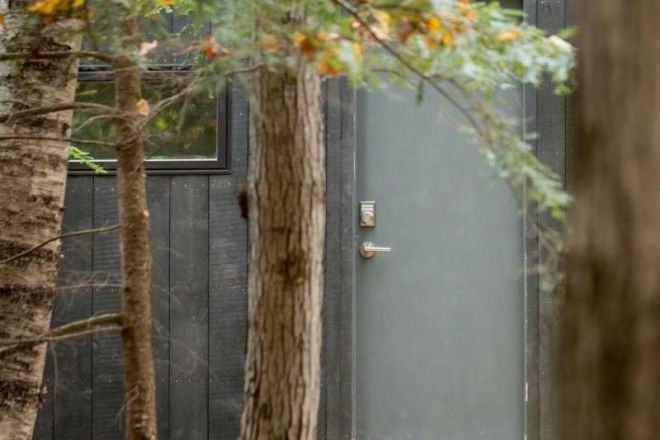
"I spent a lot more time out enjoying nature," Staff says. "That same [experience] is captured in the tiny house."
